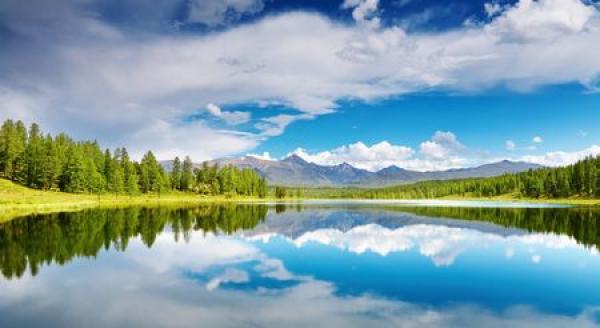 One of the keys to successfully fishing in a natural lake is to understand what you’re dealing with. By paying attention to your surroundings, you can determine the relative age of the lake. This will tell you which kind of fish you’re likely to find in the lake, which will inform your strategy. Here’s some more information to help you better understand the lake you’re fishing in:
One of the keys to successfully fishing in a natural lake is to understand what you’re dealing with. By paying attention to your surroundings, you can determine the relative age of the lake. This will tell you which kind of fish you’re likely to find in the lake, which will inform your strategy. Here’s some more information to help you better understand the lake you’re fishing in:
Natural Lakes Change Over Time
While no two lakes are exactly alike, they do all have something in common: they’re changing. These changes occur at all different paces. Sometimes, it may take hundreds of years for visible changes to occur. Other times, it may only take a few years. This aging process is known as eutrophication. It involves nearly everything – from the structural condition to vegetation levels to dominant fish species – changing over time.
How Lakes are Classified
In a broad sense, lakes are classified into three geological age groups: oligotrophic (young), mesotrophic (middle-aged), and eutrophic (old). The transition process takes a lake from stable, young, infertile, and cold to warm to very warm watered.
The youngest lakes tend to have rock basins, steep, sharp drop-offs, and very few weeds. The nutrient level tends to be lower, and oxygen is available except at the deepest depths. Middle-aged lakes tend to have less steep shorelines and drop-offs. The rocks are smaller and there is more sand and gravel. There’s significantly more vegetation and there are more nutrients in the water. Older lakes tend to be the most shallow. Instead of sand, there is muck or clay. The shorelines have gradual slopes and there usually isn’t a secondary drop-off. The water will be warmer and there will be abundant vegetation.
What Does This Mean for Fishing?
Because of the cold water and the lack of weed growth, young lakes don’t tend to support many fish. You will likely find Lake Trout even in the earliest of days. As the water warms up over the years, you’ll start to see more Walleye and then Largemouth Bass and Crappie as well. Meanwhile Bullhead fish tend to thrive in older lakes.
Once you identify what kind of lake you’re fishing in, you’ll know what kind of fish you’re looking for. This should help you have a more successful outing. And no matter what kind of fish you’re looking for, you’re going to need the right equipment to get the job done. Look no further than Signature Fishing Rods for all the latest custom rods. Give us a call at 630.234.6214 to learn more about our products today!



